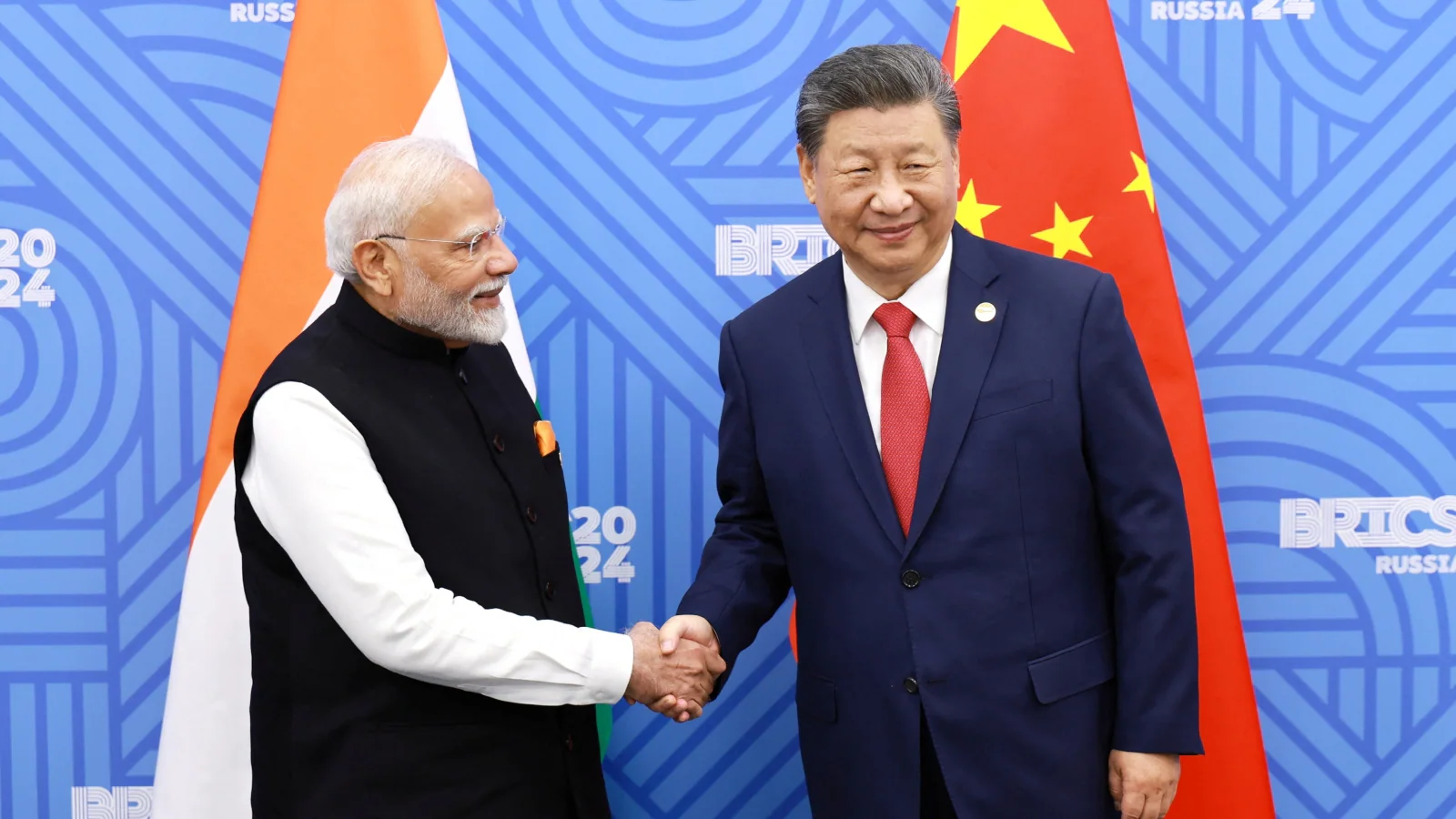Copyright news18

The normalisation of India-China ties is on an upward trajectory following Prime Minister Narendra Modi’s visit to China, where he met President Xi Jinping on the sidelines of the Shanghai Cooperation Organization (SCO) Leaders’ Summit. This moment was preceded by sustained high-level exchanges since the two leaders reached an understanding on troop disengagement at the border in October 2024. While Chinese media welcomed the dragon-elephant tango, the Indian strategic community remained skeptical. Much of the mainstream commentariat in India leaned heavily on summitry, body language, and the optics of the Putin-Modi-Xi troika. Familiar phrases resurfaced: “cautious optimism”, “China cannot be trusted,” and warnings against a return to “Hindi-Chini bhai-bhai”. Nonetheless, there was broad consensus in New Delhi that the recent thaw cannot resolve fundamental differences between the two. This was evident by recent reports of China hardening aircraft hangers at a strategic town close in the Line of Actual Control in the Arunachal Pradesh. Both sides have resumed direct flights this month and eased visa regulations for tourists and business professionals. China also opened its market for Indian pharmaceutical exports and eased the restrictions on rare earth minerals. Speculations of an early harvest in border negotiations have also surfaced, potentially involving the delimitation and demarcation of the least disputed middle sector. Yet no short-term breakthrough can substitute for a strategic vision. India’s China policy cannot remain tethered to the immediate state of bilateral ties or the whims of a third leader, be it Mr Trump or Mr Putin. Such an approach risks reducing New Delhi’s strategy to something reactive, ad hoc, and devoid of foresight. Until this challenge is addressed, India’s answer to the China question will remain elusive. This circles back to the million-dollar question: What is India’s China strategy? How should these positive developments be situated within a coherent strategic framework? What should be the modus operandi for engaging China? And what tangible benefits can India reasonably expect from cooperation? What can India get out of China? Most bargaining theories suggest that no relationship is purely conflictual or purely cooperative. Though India and China are engaged in an enduring rivalry and strategic competition in the subcontinent, it is possible to arrive at a modus operandi where both countries cooperate in an otherwise competitive relationship. To achieve this, it is crucial to articulate India’s fundamental interests with respect to China. Those interests could be pursued despite the boundary dispute, Beijing’s support for arming Pakistan, or its expanding footprint across the Indian subcontinent. To that end, India’s interests with China can be divided into two categories. The first is negative. India must ensure that China remains managed and does not become openly hostile. This entails maintaining peace and tranquility at the border, extracting concessions or waivers when Beijing directs geo-economic coercion against the West, and coordinating pro-multipolar policies among the BRICS and Global South. The second is positive: India can draw lessons from China’s rise and adopt best practices to accelerate its own development. For internal balancing in a challenging geopolitical environment, India can leverage Chinese experience to address governance, infrastructure, and social-sector challenges. Post-independence India has frequently looked to the West for importing best practices, facilitating technology transfer, and forging people-to-people ties. However, the Western experience cannot solve the problem of scale posed by India’s large population. China has tackled the problem of scale in its successful development journey. Once objectives are defined, the challenge of execution begins. The notion of external balancing with China against the West is illusory. Systemic constraints and conflicting interests will prevent any alignment between the Asian giants. Trust remains low, and long-term risks of interdependence persist. India cannot afford to repeat the mistake of the 2000s, when cheap Chinese goods boosted domestic consumption but fostered structural dependence in trade and technology. These vulnerabilities can now be exploited during times of crisis. In this context, New Delhi must establish clear guardrails for engagement and identify issue areas that advance India’s long-term interests without leaving it exposed to strategic blackmail. A Framework for India-China Cooperation As external balancing with China is out of the question, every possible avenue of cooperation can be placed on a 2×2 matrix, determined by security risk and potential for internal balancing. Security risk captures the negative externalities, including short-term exploitation if the current normalisation proves deceptive, or long-term vulnerability if ties again sour in the future. As two ancient civilisational states with a deep sense of history, India and China will have highs and lows in their relationship. Therefore, any prudent engagement with China requires preparing for the next cycle when differences resurface. Potential for internal balancing denotes how an issue-specific cooperation with China can strengthen India’s comprehensive national power. Contrary to traditional measurements of internal balancing in material terms like military and economic power, a wide net must be cast to identify the issue areas. Sectors such as urban planning, education, and governance reform act as force multipliers by unlocking citizens’ potential, removing inefficiencies in public life, and sustaining economic growth. Based on the above criteria, areas of engagement with China can be divided into four distinct quadrants. First, high-security-risk and low internal-balancing issues. They should be put off the table. These encompass the most troublesome aspects of the relationship, including Beijing’s support for Pakistan, its assertive footprint across the subcontinent, and the asymmetric trade in finished goods. Being a stronger country, China will have a natural advantage in any engagement which would create vulnerability for India without delivering any benefits. Second, low-security-risk and low internal-balancing areas. They are easiest to pursue. These include tourism and pilgrimage, people-to-people exchanges, and cultural cooperation. While they may seem modest, these initiatives will expose the citizens of both countries to one another, foster trust, and help move both India and China beyond the Western gaze of each other’s perceptions. They represent low-hanging fruit in the relationship. Third, low security risk but high internal-balancing issues. They offer India the greatest upside. These can include studying China’s education system, exploring its R&D and innovation ecosystem, learning from urban planning practices, and facilitating technology transfer in climate action and the clean energy transition. Engagement here strengthens India’s national power while posing minimal risk. Fourth, high-security-risk and high internal-balancing issues. They are most complex and require calibrated engagement. Though mutually beneficial, cooperation in areas such as resolution of the border dispute, supply chain integration, and technology transfers requires trust and momentum that are currently absent. China has little incentive to resolve the border dispute as it would free India to emerge as a maritime power. On the other hand, India is wary of technology and supply chain dependence that would hinder manufacturing ambitions, stagnate it in downstream processes, and leave it susceptible to coercion. The path to India-China normalisation does not lie in indulging in euphoria or succumbing to paranoia. Instead, it demands a blend of pragmatism, foresight, and open-mindedness. Optimism must be balanced by realism, and cooperation should be pursued as a tool to advance India’s long-term interests. India should prioritise areas of low security risk and high internal-balancing potential, while steering clear of initiatives that create vulnerability without tangible gain. Cultural exchanges, tourism, and education cooperation can build trust, whereas guarded investments, urban planning, and innovation partnerships can accelerate India’s development journey. At the same time, high-risk, high-reward areas such as border dispute resolution or supply chain integration require prudence. Ultimately, India-China relations will remain competition more than cooperative, shaped by historical memory, geopolitical constraints, and strategic rivalry. New Delhi’s challenge is to institutionalise engagement with China that strengthens internal capabilities, hedges against risks, and preserves strategic autonomy. That said, peace and tranquility along the border remain the foundation of any relationship with China. This objective is best served by continued investment in border infrastructure and preparedness for potential contingencies. The author is a PhD candidate at Indiana University Bloomington and is a Consultant at Rashtram School of Public Leadership, Rishihood University.



